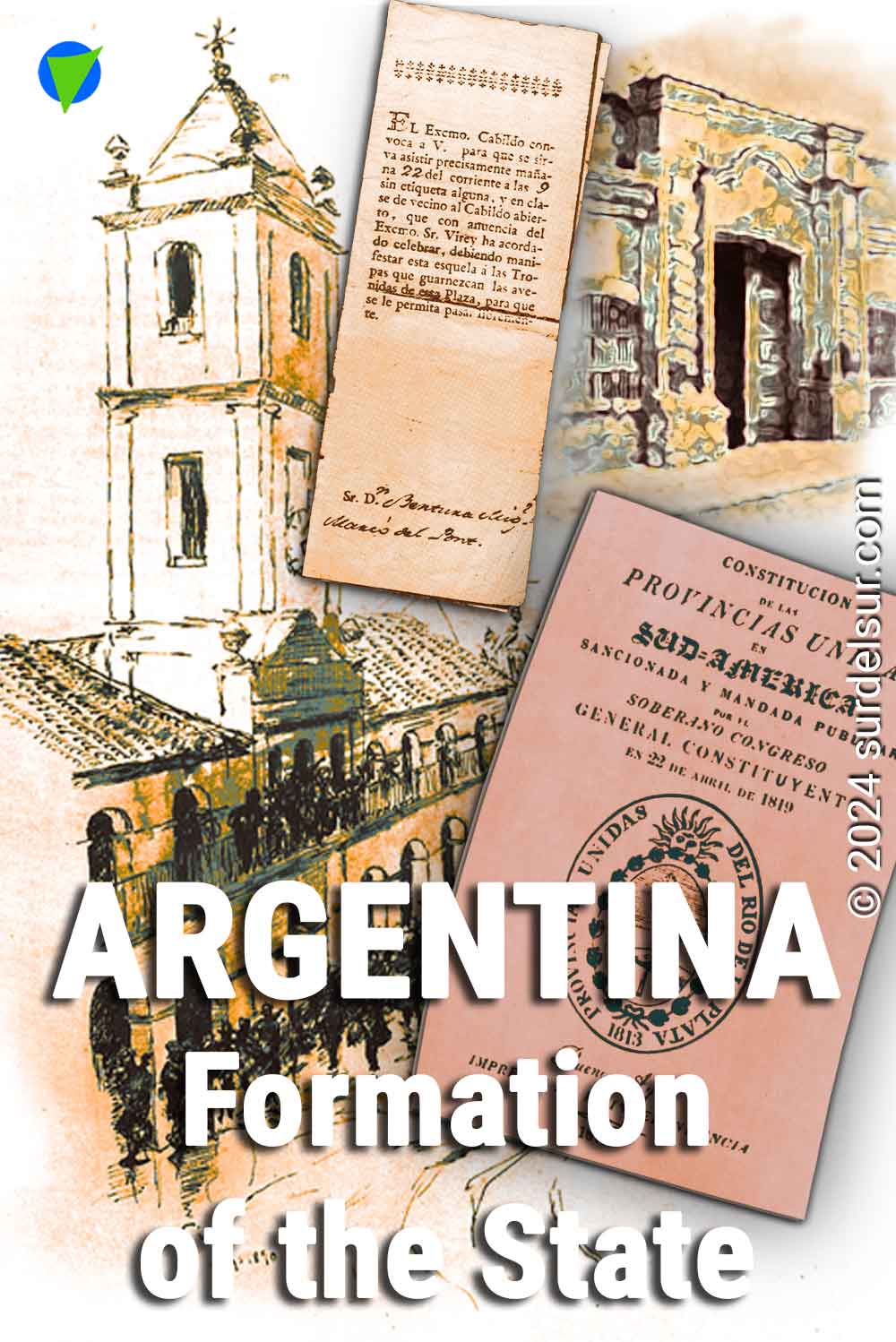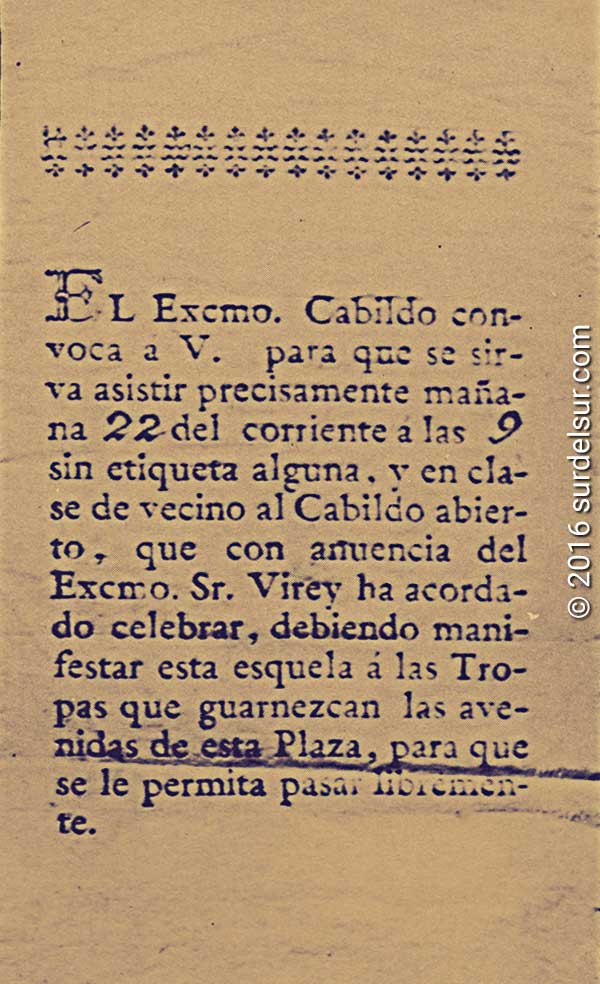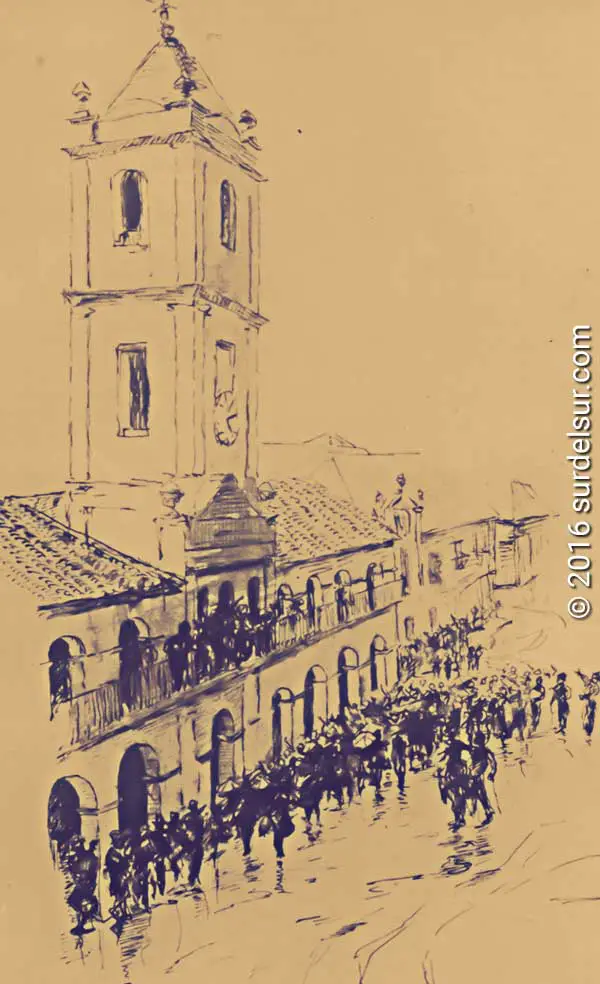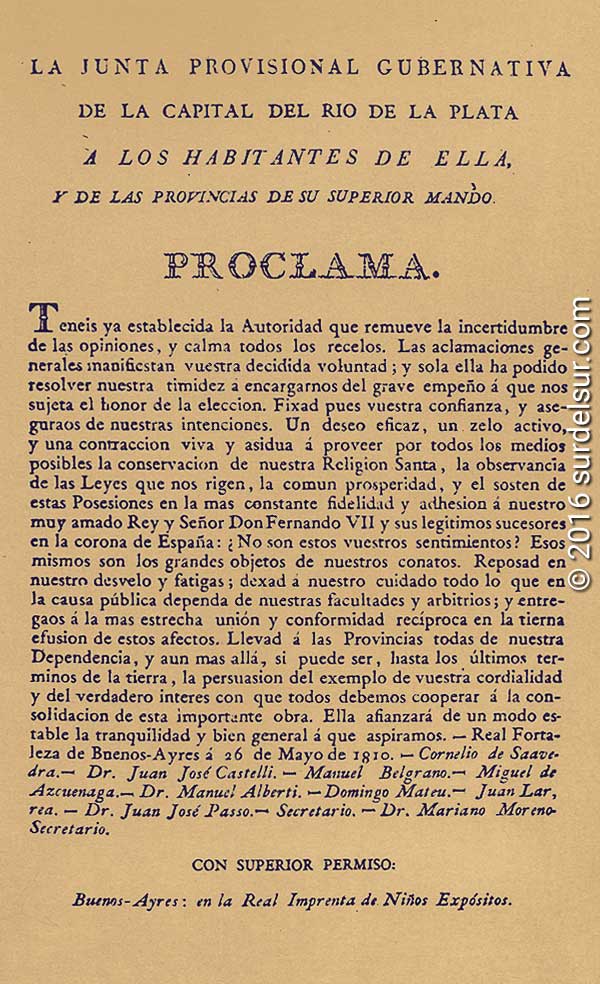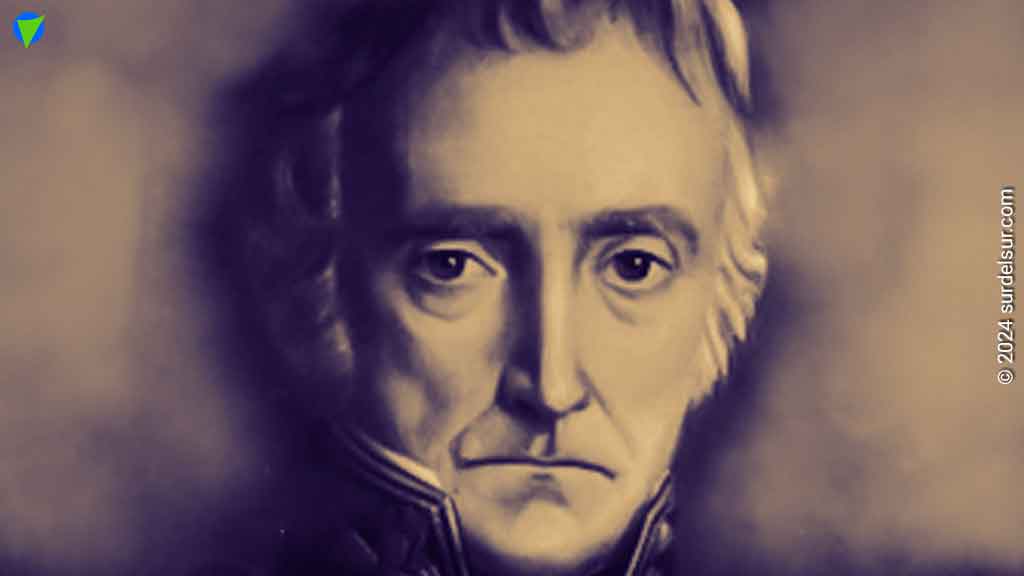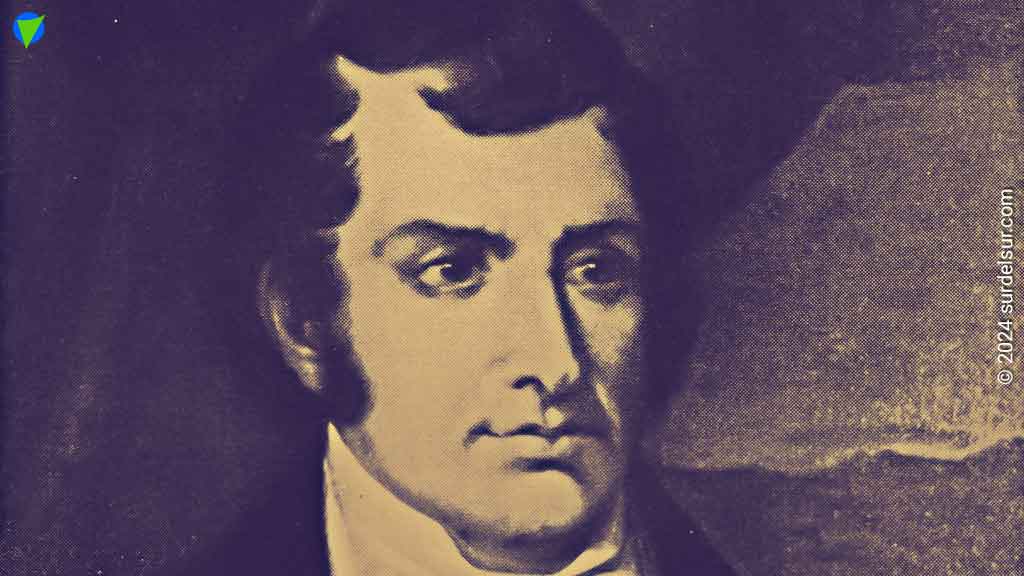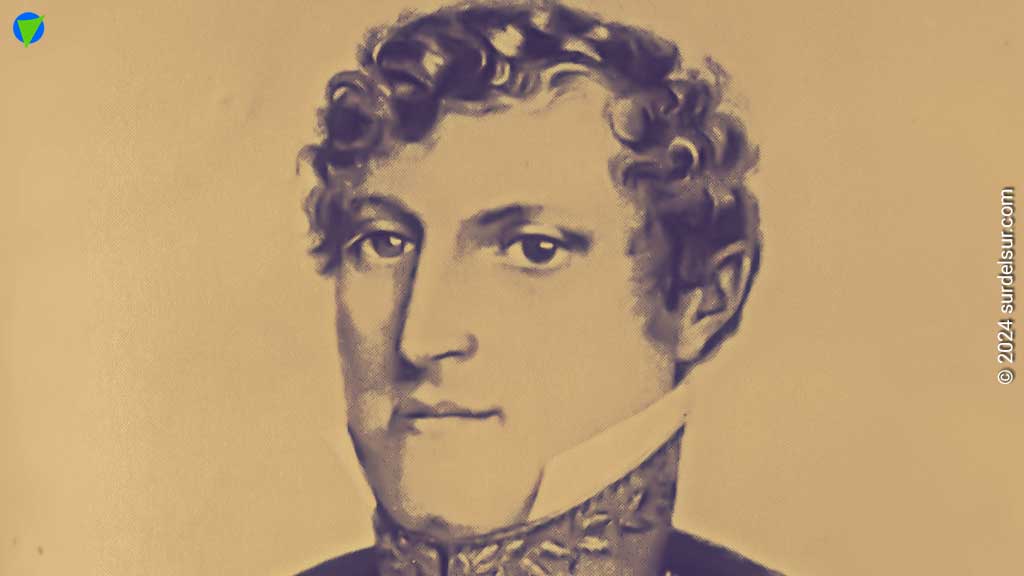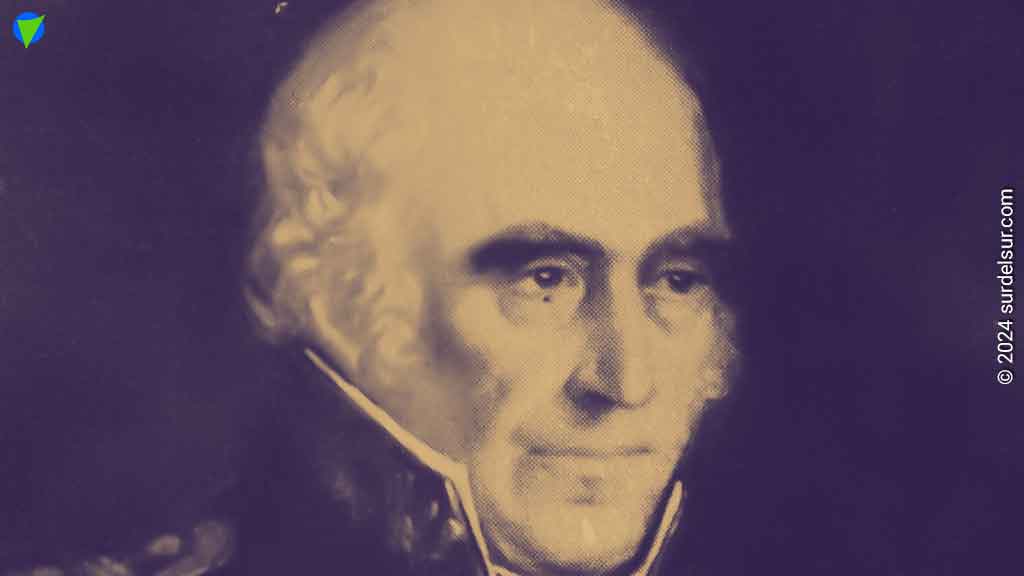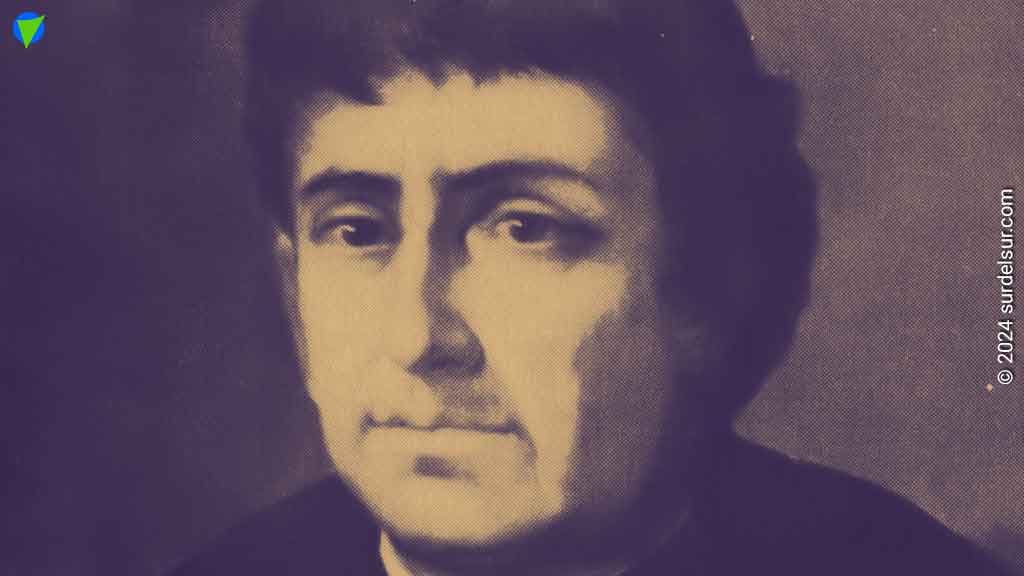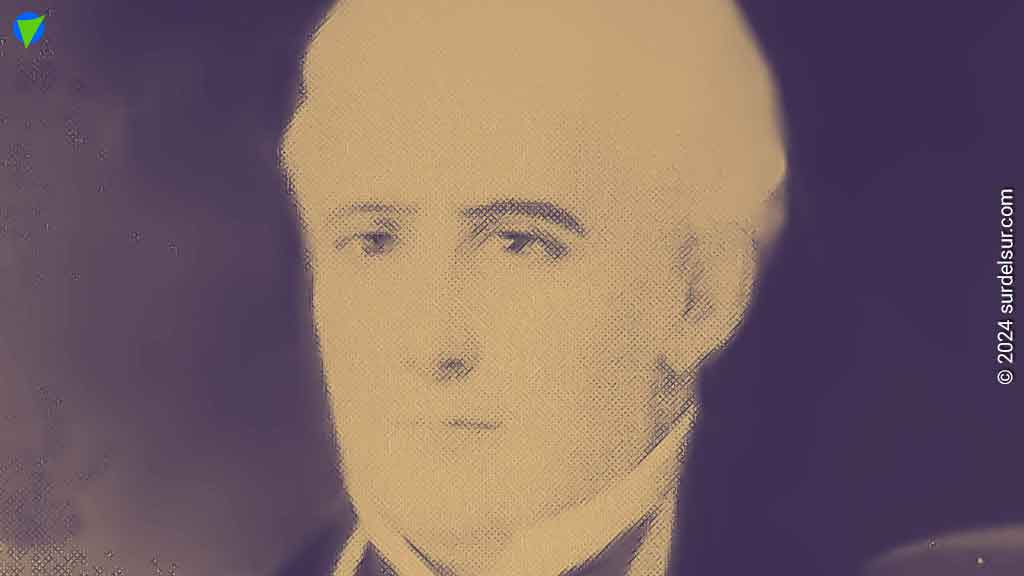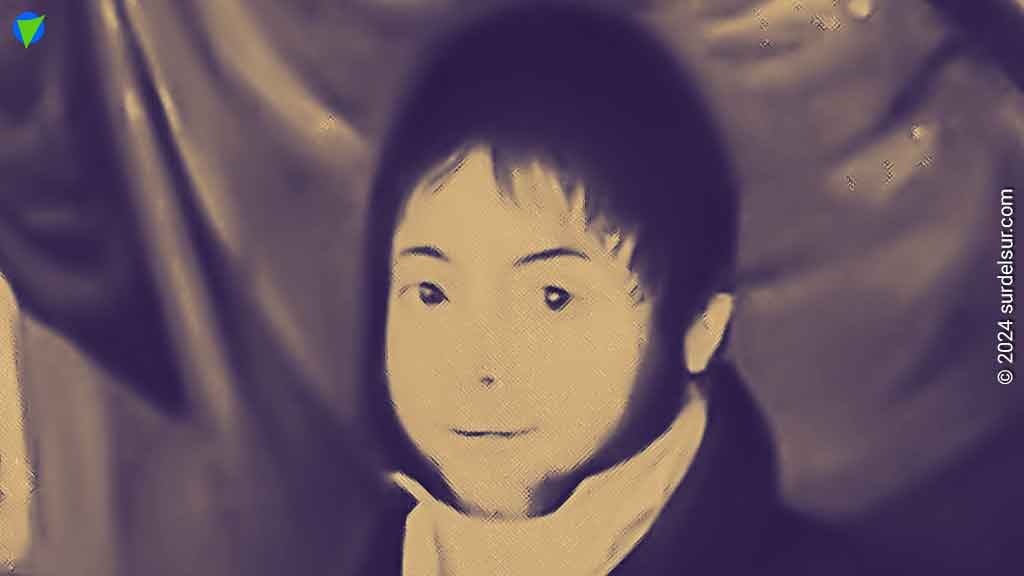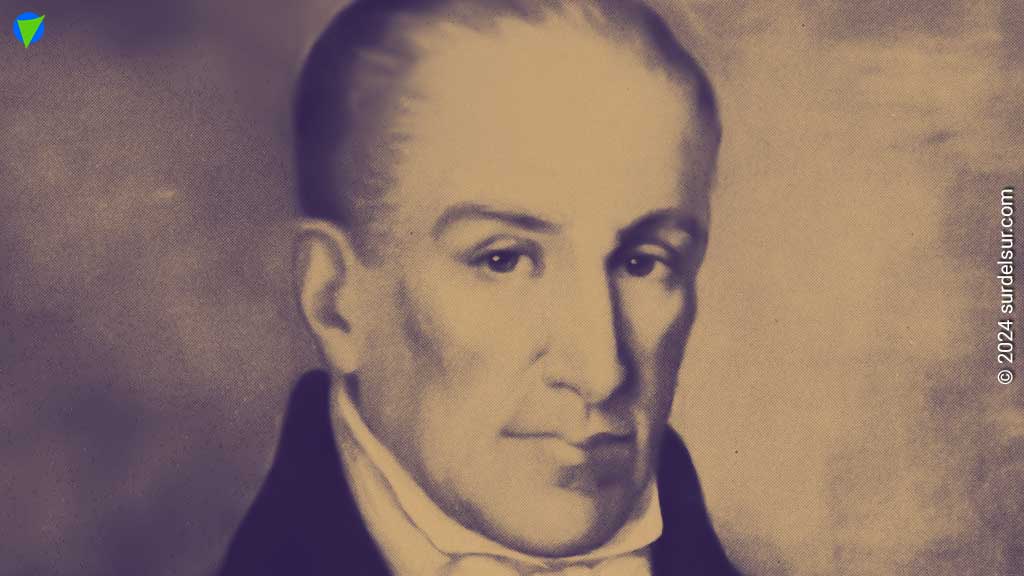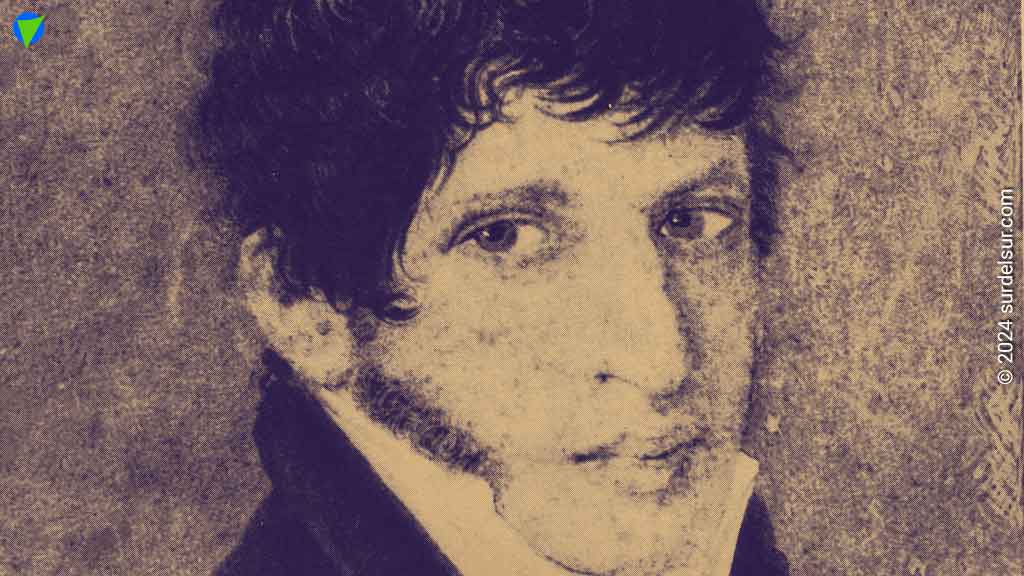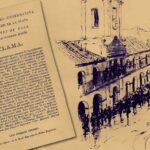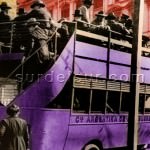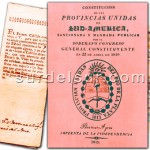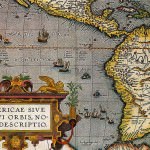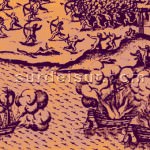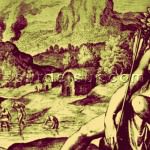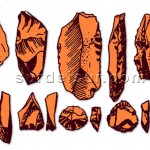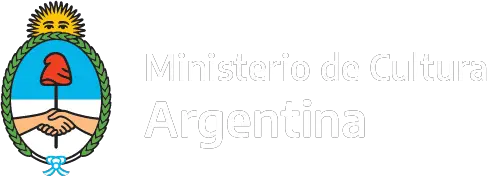The May Revolution, May 25, 1810, deposed the Spanish viceroy and appointed the Primera Junta (First Patriotic Government Board), elected by the people, in the Cabildo of Buenos Aires, the Capital of the then Viceroyalty of the Río de la Plata. It is also the culmination of May Week where revolutionary actions mark the path to the Independence of Argentina from the Spanish monarchy, which would be realized with the Declaration of Independence on July 9, 1816, in Tucumán.
The Revolution of May 25, 1810, represents a symbolic date, in which the people of the Plata colonies, gathered in the Plaza de la Victoria, now Plaza de Mayo, at the doors of the Cabildo de Buenos Aires (Buenos Aires Town Hall), and elected their government. The members of the Cabildo, at the request of the people and supported by the militia, created the Primera Junta (First National Government Board), deposing the Spanish viceroy Baltasar Hidalgo de Cisneros, Spanish authority in the Viceroyalty of the Río de la Plata. The revolutionary movement, furthermore, ignores the Regency Council, formed after the fall of the Junta Central de Sevilla (Central Board of Seville), but pretends to declare loyalty to the captive king Fernando VII.
CONTENTS
Background of the May Revolution
Among the most important antecedents of the May revolutionary movement is the brave defense of the Río de la Plata colonies, which the Creoles exercised during the first (1806) and second (1807) English invasions. This confirmed their identity as a people and left an organizational balance of popular leadership and militias.
Also, it should be remembered as a precursor to the Revolution of 1810, that the revolutionary germ had already been born a year before, also on May 25, 1809, in Chuquisaca. The revolutionary movement began in the university and intellectual environments. One of the prominent protagonists was Bernardo de Monteagudo, a student from Tucumán, whose arguments would spark the rebellion. The revolution extended to La Paz, on June 16, and was savagely repressed by the order of Cisneros.
Don’t miss the full report >> Internal and external causes and consequences of the May Revolution
External influences on the people of the colonies
The principles of the Independence of the United States, and the French Revolution, influenced the people of the colonies and the independence movement.
The people of the colonies were deeply divided, Monopolists vs Liberals, Americans vs Realists, and Autonomists or Independentists. These divisions generated even greater divergences, where the limits were confusing. However, the Autonomists or Independentistas, who made up a diverse group, miraculously agreed on their fate on May 25, 1810, thanks to the support of military power and pressure groups.
Only the so-called decent and wealthy people were considered citizens, however when they felt truly threatened all social classes participated.
Popular sectors born in the colony: Criollos, patriots, Americans, and South Americans, were influenced by the force of the events. The Declaration of Independence of the United States, from the power of the British monarchy in 1776, whose constitution proposed equality, the right to life, liberty, and the pursuit of happiness, indicated a direction to follow. Then the French Revolution of 1789, which abolished the monarchy, and the privileges of the clergy and the nobility, which also postulated values of freedom, equality, and fraternity, marked the path towards autonomy. A new paradigm was sweeping the world and also reached the Spanish colonies.
Meanwhile, the enlightened minority, formed mostly in Europe, drank in new currents of thought such as those of economists such as Jovellano, Campomanes, and Adam Smith, or thinkers such as Rousseau, Montesquieu, Voltaire, and others.
Political and economic unrest in Buenos Aires society
May Revolution was an eminently Buenos Aires movement. There was unrest among Creoles and Spaniards born in the colonies who wanted to access government positions reserved for Spaniards born in the peninsula.
The colonies were urged to free themselves from the Spanish economic monopoly. The commercial monopoly prohibited any commercial relationship with any power other than Spain.
But that was not all, …an incredible opportunity presented itself in the external panorama.
Fall of the Central Board of Seville in Spain
France invaded Spain, and Napoleon took King Ferdinand VII prisoner. The Central Board of Seville governed in the name of the king and when it fell, the viceroy Baltasar Hidalgo de Cisneros appointed by said Board began to be questioned.
The news of the fall of the Junta Central de Sevilla (Central Board of Seville) arrived in Buenos Aires on May 13, 1810, days before May week. This news acted as a circumstantial trigger in a population prepared and willing to manage its destiny, which took advantage of a unique opportunity.
On May 14, the English frigate Mistletoe arrived at the port of Buenos Aires, and shortly after the French ship Juan París. Both brought news about the fall of the Supreme Central Board of Seville.
The junta had represented the power of Fernando VII, a captive of Napoleon. After his fall, the remaining authority in Spain took refuge on the island of León opposite Cádiz, where it formed a Regency Council.
Viceroy Baltasar Hidalgo de Cisneros tried in vain to delay the spread of the news, which, when known, accelerated the revolutionary movement.
May Week 1810
The Week of May 1810 told day by day.
Friday, May 18
After the news on May 14, of the fall of the Junta Central de Sevilla (Central Board of Seville) on January 13, the situation of Baltasar Hidalgo de Cisneros was truly unsustainable. The legitimacy of his mandate was questioned, given that the Board that had appointed him viceroy had disappeared.
However, Cisneros intended to manipulate the information, reduce its impact, and buy time. His objective was for the four viceroyalties of America to meet to elect a sovereign Regency Council.
Due to this circumstance, Cisneros stated with partial information on May 18. But the truth is that there were leaks, and the news of the fall of the Junta Central de Sevilla (Central Board of Seville) had reached the patriots.
Probably, encouraged by the Correo de Comercio, which Manuel Belgrano had published since March, the young patriots met to share the news. They used to get together at the Vieytes soap shop, the Orma farm, or Rodríguez Peña’s house.
Saturday, May 19
This group asked Saavedra, head of the Patricios Regiment, to garrison his troops, and asked the viceroy to convene a Cabildo Abierto (Open Town Hall).
Cornelio Saavedra and Manuel Belgrano asked Mayor Lezica to call a Cabildo Abierto (Open Town Hall). For his part, Juan José Castelli did the same before trustee Leiva.
Sunday, May 20
Viceroy Cisneros brings together the military leaders and requests their collaboration in the face of a possible rebellion. The military refuses.
Meanwhile, the patriots Castelli and Martín Rodríguez insist on the Cabildo Abierto (Open Town Hall), in front of the Viceroy, in an unfriendly tone, and he decides to give in to the pressure.
The Creoles, in turn, prepare to take action, gathering at the Café de los Catalanes and La Fonda de las Naciones. Specifically, they maintained that the Viceroy should resign.
Monday, May 21
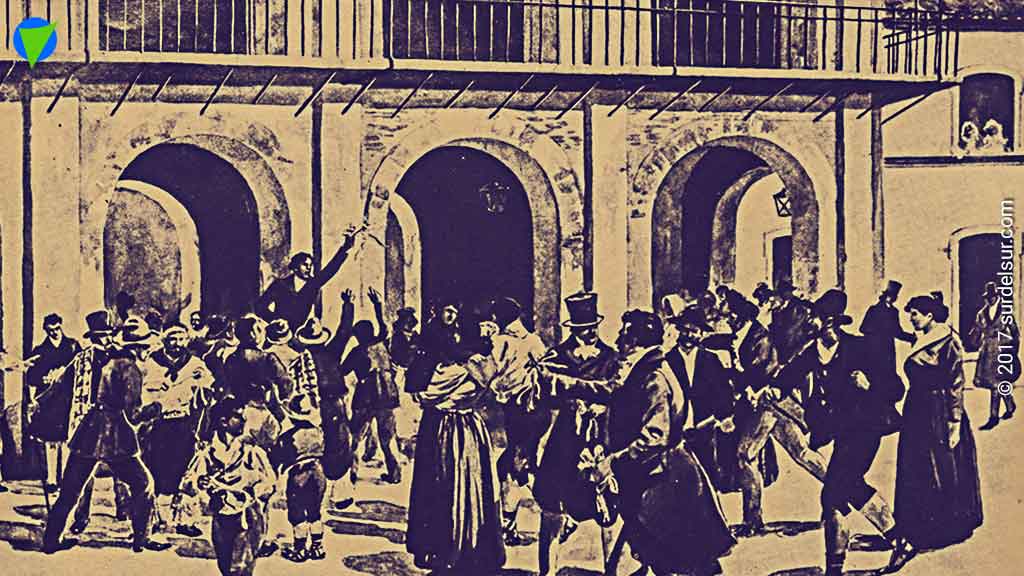
The lobbyists gathered for their usual tasks were surprised by the tumult grouped in the Plaza de la Victoria.
Around 600 armed men in the square, wore the portrait of Ferdinand VII on their hats and their lapels a white ribbon, a symbol of Creole-Spanish unity. These symbols were used since the time of the defense of Buenos Aires against the English.
This group of revolutionaries, led by Domingo French and Antonio Luis Beruti, was called the “Legión Infernal” (Infernal Legion). They scrimed out for the dismissal of the Viceroy. Also convocating the Cabildo Abierto (Open Town Hall).
Tuesday, May 22, 1810
Baltasar Hidalgo de Cisneros, with his authority, violated, and as a result of pressure from the militias and young revolutionaries, called a Cabildo Abierto (Open Town Hall) for May 22, 1810.
The invitation was written and addressed to the civil, ecclesiastical, and military administration and qualified residents: the urban elite. Of the 450 guests, only 251 attended.
.
However, on May 22, the lobbyists, despite popular pressure, decided to continue supporting the Viceroy
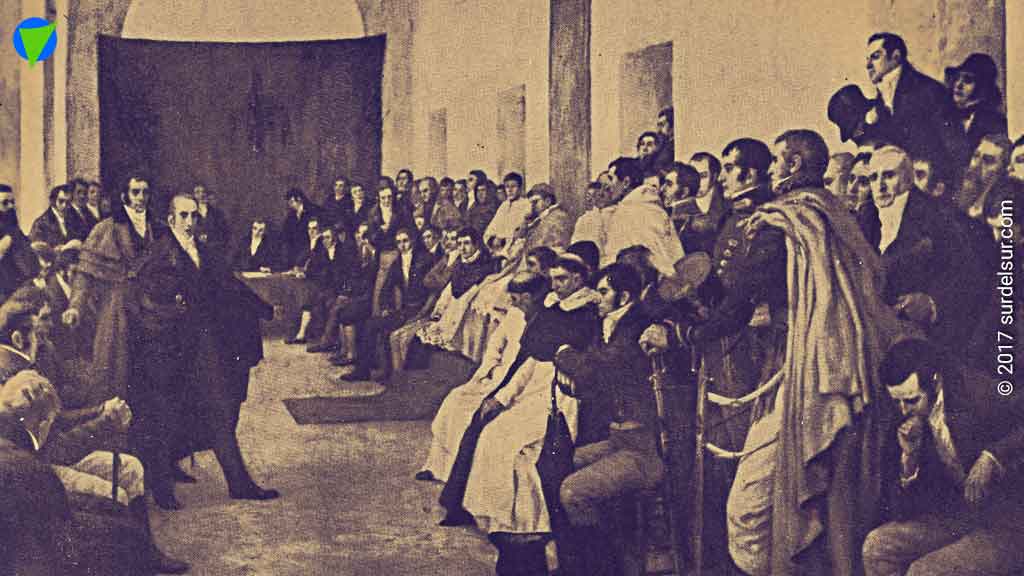
Wednesday, May 23
The Cabildo controlled by royalists, appointed a Government Board chaired by Cisneros, which provoked the reaction of the militias and the remaining forces.
Thursday, May 24
The rumors were confirmed, the Cabildo effectively appointed a governing board chaired by the Viceroy. In addition, it was made up of four members: the Spaniards Juan Nepomuceno Solá and José de los Santos Inchaurregui and the Creoles Juan José Castelli and Cornelio Saavedra, challenging the popular will.
Cornelio Saavedra and Juan José Castelli, who had not even been consulted, resigned. They were also responsible for obtaining the resignation of the former Viceroy. Both appeared at the Viceroy’s house on the night of the 24th and obtained the resignation of the leadership of the Board. The Board was dissolved and the Town Council was convened again the following morning.
Friday, May 25, 1810
On Friday, May 25, the will of the Creoles finally prevailed. An autonomous and provisional government was formed, which would govern in the name of Fernando VII, in the viceroyalty of the Río de la Plata.
Groups of neighbors and militiamen, including the “infernals” led by Domingo French and Antonio Beruti, gathered in front of the town hall waiting for definitions.
Gathered in the Plaza de la Victoria – current Plaza de Mayo – they managed to get the Cabildo to create the Provisional Government Board of the Río de la Plata.
Primera Junta: The first national government
Thus, the Primera Junta: Provisional Government Board of the Provinces of the Río de la Plata, was formed in the name of Mr. Don Fernando VII, which did not recognize the authority of the Regency Council of Spain and the Indies, but still governed nominally, in the name of the King of Spain Fernando VII.
The latter, for some, was just a strategy that they called the “Fernandina mask”, that is, it was said that they governed in the name of Fernando, but in reality, they wanted to declare independence. They were aware of their weakness and decided to keep up appearances. Ferdinand’s mask remained until the Declaration of Independence on July 9, 1816.
As shown in the oil painting by the Spanish painter Julio Vila y Prades, the First Junta is seen meeting.
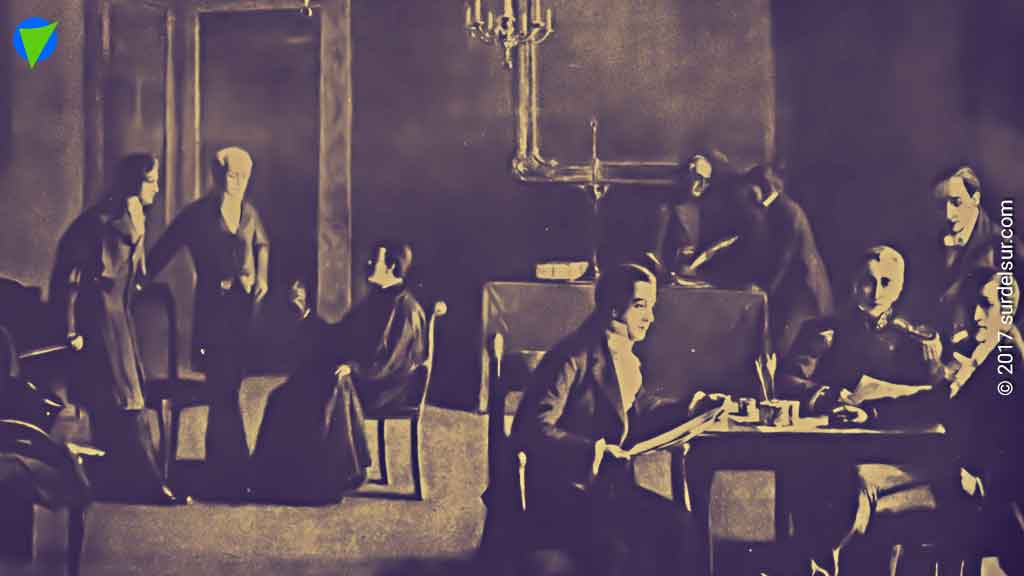
Members of the First Board
On the afternoon of the same day, May 25, the Provisional Government Board took the oath. The members were the following:
PRESIDENT
Cornelio Saavedra
(1759-1829)
Statesman and soldier, commander of the Patricios Regiment, American born in Bolivia.
VOWELS
Dr. Juan José Castelli
(1764-1812)
Lawyer and Politician educated at the National University of Córdoba. Rioplatense born in Buenos Aires, United Provinces of the Río de la Plata
SECRETARIES
The decline of the viceroyalty
In Buenos Aires, the former viceroy Cisneros and the members of the Audiencia tried to flee to Montevideo and join Francisco Javier de Elío (1767-1822) Montevideo’s governor, who did not abide by the authority of Buenos Aires and managed to be named Viceroy. However, they were arrested and sent to Spain on an English ship.
Read more about Argentina before becoming a Nation >>
The Difficult Road to Independence
The May Revolution represents the beginning of the path to Independence. Is a symbolic date, on which the people of the colonies of Plata elected their government, the First Junta, the First National Government.
Autonomy did not come without conflicts, the different warring factions, which converged in the revolutionary movement of 1810, succeeded each other in power and alternated in the government.
The confrontation between Unitarians and Federals would characterize the fight for independence and national organization.
With free trade, Buenos Aires dominates the port and customs, designing a future model of a country with a radiocentric structure with its vertex in Buenos Aires.
The revolutionary movement would culminate with the Declaration of Independence of Argentina on July 9, 1816.
Read More about The Foundation of the Argentine State >>
What is celebrated on May 25 in Argentina?
In Argentina, the May Revolution of 1810 is celebrated every May 25, in which the First National Government Board elected by the people was formed. The revolutionary action deposed the Spanish viceroy, until then, the highest representative authority of the Spanish monarchy in Buenos Aires, and the people of the colonies began their path to independence.
Since the Revolution of May 25, 1810, every May 25 of each year, the anniversary of the May Revolution is celebrated with popular patriotic holidays.
On May 5, 1813, the Assembly officially consecrated May 25 as a civic holiday, one of the most important national dates in the Argentine Republic. That day the patriotic song was sung in the theater.
First Anniversaries of May
Without a doubt the first celebrations of the May anniversaries were unique, here we present some particularities of the anniversaries of 1811, 1812, and 1813.
Celebration of May 25, 1811
In celebration of the first anniversary of the Revolution, on May 25, 1811, Castelli, who was on his mission to occupy Upper Peru, called on the indigenous communities to meet.
The meeting was in the ruins of Tiahuanaco city, meters from Titicaca, the sacred lake of the Incas. There Castelli, in front of the natives and the soldiers of the Northern army, offered his tribute to the Incas and vindicated the rights of the native peoples.
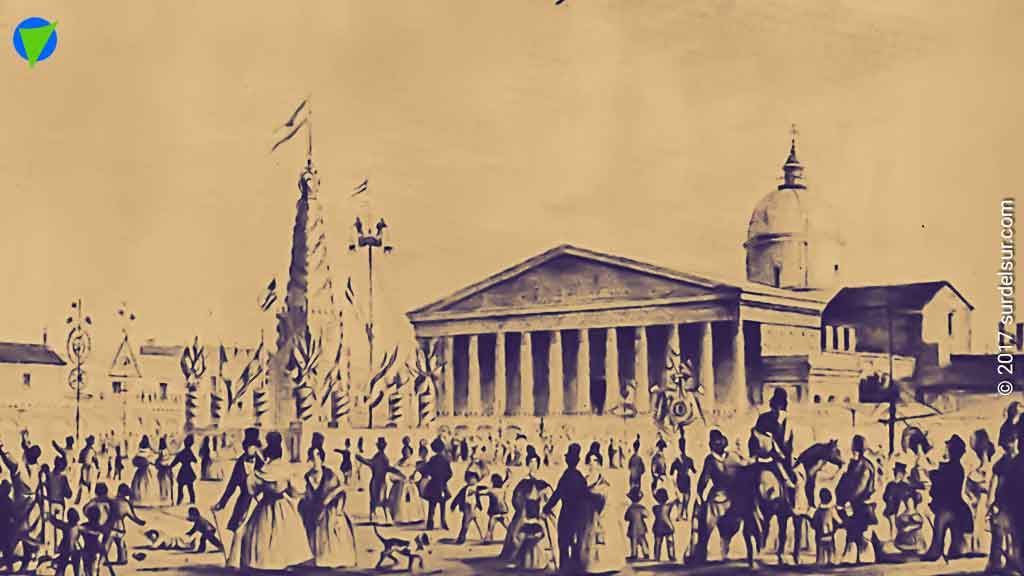
Meanwhile, in Buenos Aires, the May Revolution was commemorated, with the inauguration of the May Pyramid. It was in the center of Plaza Victoria, in front of the Cabildo (Town Hall). When the Recova (arcade) was removed in 1883 – which divided the square in two – it was moved to its location in the current Plaza de Mayo.
Commemoration of May 25, 1812
In San Salvador de Jujuy, the Capital of Jujuy Province, Manuel Belgrano, celebrated on May 25, 1812. The ceremony was presided over by the light blue and white flag, created by Belgrano and blessed by Canon Gorriti.
Celebration of May 25, 1813
Instead a year later, on May 25, 1813, during the celebration of the 3rd anniversary of the May Revolution, Canon Gorriti blessed a white flag with the shield in the center. Belgrano had ordered it to be made, with the seal of the Assembly officialized on March 12 of that year.
WAS THE ARTICLE USEFUL TO YOU? SAVE IT!!
READ THE RELATED ARTICLE…!
